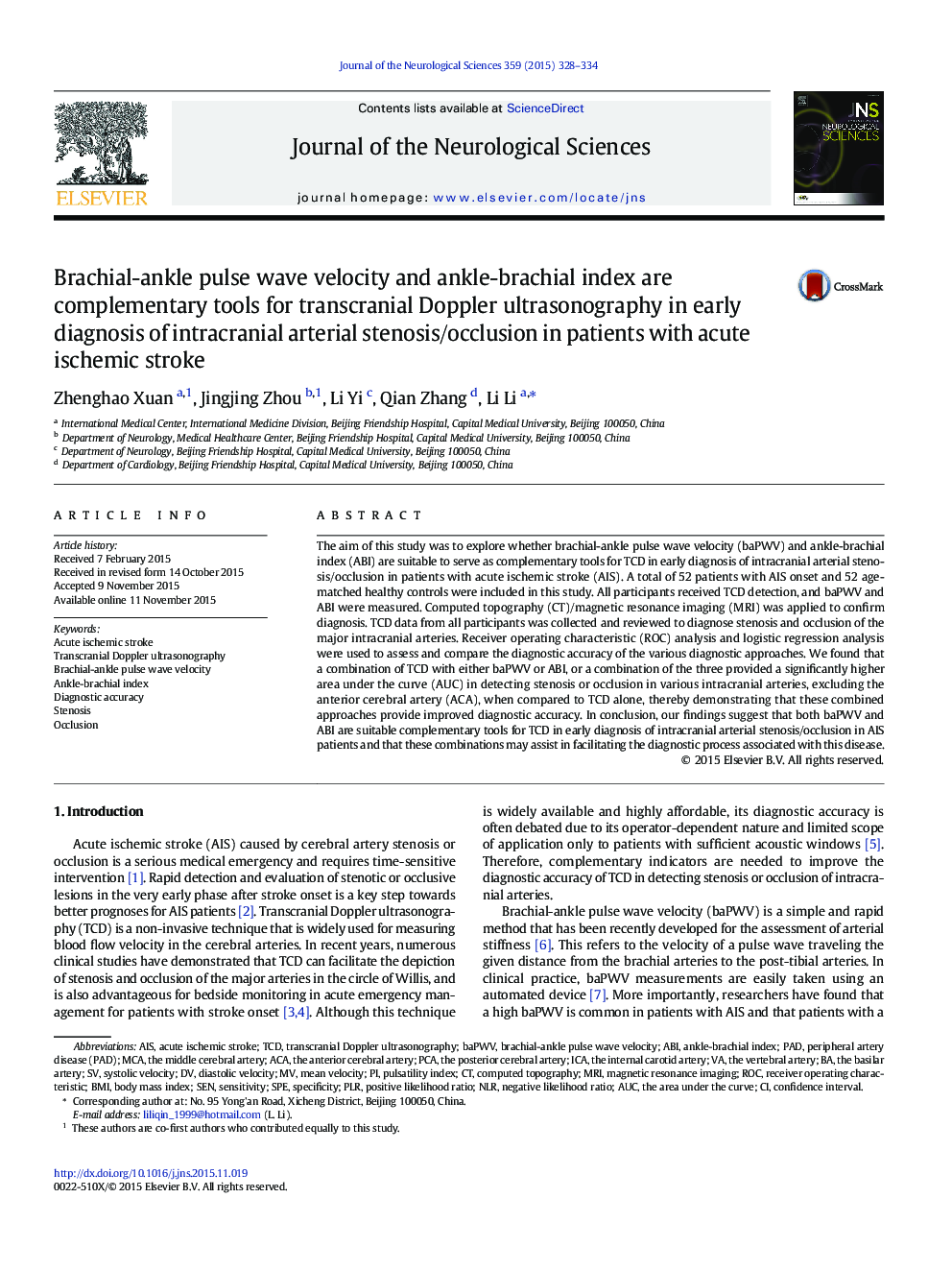| Article ID | Journal | Published Year | Pages | File Type |
|---|---|---|---|---|
| 8275632 | Journal of the Neurological Sciences | 2015 | 7 Pages |
Abstract
The aim of this study was to explore whether brachial-ankle pulse wave velocity (baPWV) and ankle-brachial index (ABI) are suitable to serve as complementary tools for TCD in early diagnosis of intracranial arterial stenosis/occlusion in patients with acute ischemic stroke (AIS). A total of 52 patients with AIS onset and 52 age-matched healthy controls were included in this study. All participants received TCD detection, and baPWV and ABI were measured. Computed topography (CT)/magnetic resonance imaging (MRI) was applied to confirm diagnosis. TCD data from all participants was collected and reviewed to diagnose stenosis and occlusion of the major intracranial arteries. Receiver operating characteristic (ROC) analysis and logistic regression analysis were used to assess and compare the diagnostic accuracy of the various diagnostic approaches. We found that a combination of TCD with either baPWV or ABI, or a combination of the three provided a significantly higher area under the curve (AUC) in detecting stenosis or occlusion in various intracranial arteries, excluding the anterior cerebral artery (ACA), when compared to TCD alone, thereby demonstrating that these combined approaches provide improved diagnostic accuracy. In conclusion, our findings suggest that both baPWV and ABI are suitable complementary tools for TCD in early diagnosis of intracranial arterial stenosis/occlusion in AIS patients and that these combinations may assist in facilitating the diagnostic process associated with this disease.
Keywords
Peripheral artery disease (PAD)baPWVNLRPLRMCAAISICAABIACAROCSPETCDAUCPCASENMRIOcclusionMagnetic resonance imagingStenosisSensitivityDiagnostic accuracyMean velocityBrachial-ankle pulse wave velocityTranscranial doppler ultrasonographyacute ischemic strokebody mass indexBMIpulsatility indexAnkle-brachial indexconfidence intervalthe area under the curvepositive likelihood rationegative likelihood ratioSpecificityPADreceiver operating characteristic
Related Topics
Life Sciences
Biochemistry, Genetics and Molecular Biology
Ageing
Authors
Zhenghao Xuan, Jingjing Zhou, Li Yi, Qian Zhang, Li Li,
